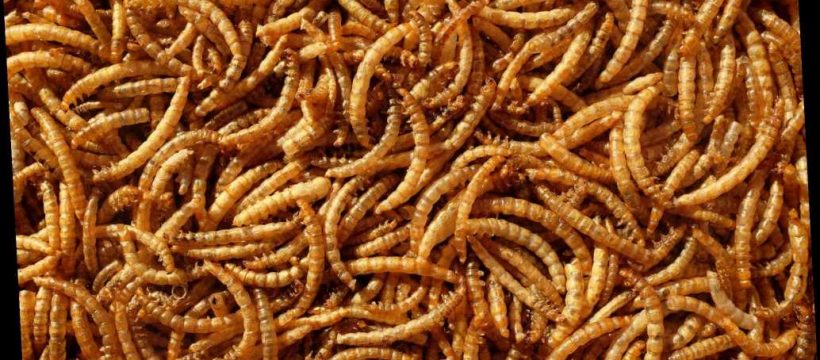More On:
insects
Scientists decry death by 1,000 cuts for world’s insects
Monarch butterfly may be added to endangered species list
Purina debuts dog and cat food made with fly larvae
New species of invasive crop-destroying bug found in Florida
If it’s true that we “eat first with our eyes,” then you may want to keep them shut for this meal.
The European Food Safety Agency, under the jurisdiction of the European Union, has deemed yellow mealworms safe for human consumption — and is encouraging us to do the same.
The announcement opens the door for the bug-based food market, such as insect-enriched breads, pasta, cookies, candies and more.
Mealworms — not actually worms, but the larvae of Tenebrio Molitor beetles — are packed with lean protein, healthy fats and fiber and are touted as one of the most underrepresented healthy foods in the world. EFSA chemist Ermolaos Ververis told Reuters that mealworms would likely be the first of many insect species sanctioned by the EU in coming years.
“We have already received a lot of dossiers on insects as novel food,” said Ververis, who told the news agency that the EFSA has received over 150 applications for “novel” foods since 2018, such as algae and lab-grown comestibles. The EU defines this category as any food that was not “significantly” consumed in Europe prior to May 1997.
People around the world have actively consumed insects for all of human history and still do, including many cultures of Africa, Latin America, Asia and Oceana. They aren’t just digging for grubs, but more along the lines of cricket bars, chocolate-dipped grasshoppers and fried silkworms.
Earlier this year it was revealed that even the maligned “murder hornet” also happens to be a delicacy in Japan, where they often marinate or skewer the wasp for an on-the-go snack.
Edible insects had previously been expressly prohibited from being sold in several European nations, while others were less strict. The EFSA’s new ruling brings clarity to a debate that has roiled for years between state agencies and food entrepreneurs.
For years, foodies and environmentalists alike have called on conscientious diners and cooks to consider incorporating insects into their diets. In 2013, a report by the Food and Agriculture Organization (FAO) of the United Nations urged global citizens to eat more creepy-crawlies to accommodate our ballooning population, which is estimated to reach 9 billion by 2050. Bite-for-bite, insects are more sustainable, cost-effective and nutritious compared with conventional meat, the FAO concluded.
Cricket production, for example, is 20 times more efficient and produces 80 times less methane compared with the global livestock industry, which accounts for over 14.5% of greenhouse gas emissions worldwide.
Share this article:
Source: Read Full Article

